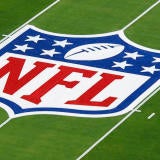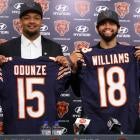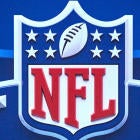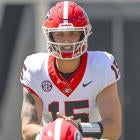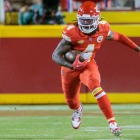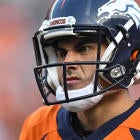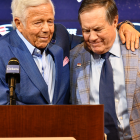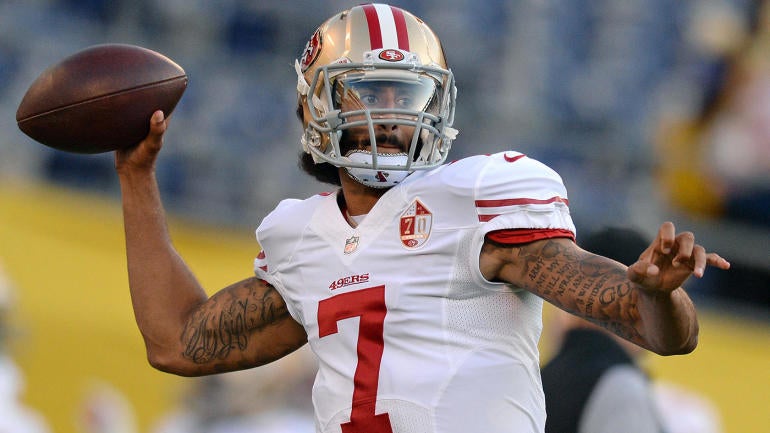
It's now been three full seasons since Colin Kaepernick last played in an NFL game. Much has changed during that time, including and perhaps especially attitudes towards Kaepernick's peaceful protests of police brutality and systemic racism. That's largely true not just on a national scale, but also in and around the NFL. We have seen over the past several weeks that players, coaches, executives, and even commissioner Roger Goodell have voiced their support for the Black Lives Matter movement, the protests that sprung up around the country (and that are sure to take place during the upcoming NFL season) in the wake of George Floyd's death at the hands of Minneapolis police (and Breanna Taylor's at the hands of Louisville police), and in several cases, Kaepernick himself.
But it's not just the outside world that has changed since Kaepernick last took the field. The game has changed as well. In some ways, Kaepernick would fit better in the 2020 NFL than he did in the version of the league in which he actually played from 2012 through 2016. In other ways, not so much. Now that it seems more likely than at any time in the past several years that Kaepernick might actually wind up on an NFL team again, this seems like as good a time as any to examine some of the myriad ways the league has moved toward Kaepernick, as well as the ways it has moved away from him.
How NFL has moved in Kaepernick's direction
The single most notable way the league has moved in Kaepernick's direction is the increased prevalence of offensive coordinators and head coaches who are willing to tailor their offensive scheme to fit the talent on the roster, as opposed to making the talent fit into their narrowly-defined scheme. Specifically, more and more coaches are willing and even eager to take advantage of their quarterback's mobility, whether via designed runs, run-pass option plays, or encouraging them to scramble away from pressure with the intention to take off downfield as opposed to just buy more time to throw.
According to data from Pro Football Focus, designed quarterback runs accounted for 6.9 percent of all running plays from 2012 through 2016; but that share jumped to 7.8 percent of run plays from 2017 through 2019, and 8.1 percent in 2019 alone. Kaepernick was likely the best designed-run quarterback in the NFL from 2012 through 2016, averaging 12.0 yards per carry on 191 designed runs during that time.
There is currently no public data on RPO plays before 2018, but if you've been watching NFL games recently, just think about how much more often they have been mentioned on broadcasts in recent seasons than they had ever been before. The threat of Kaepernick as a runner can be leveraged even more in RPO plays than the read-option style runs that were used when he was last in the league, simply because he'd also have the option to throw the ball in addition to handing it off or taking off to run himself. The more options the defense has to think about, the more space Kaepernick has to take advantage of, and the less time defenders have to close on him.
Meanwhile, being able to buy time under pressure has become more important than ever before. It's not a coincidence that the league's best quarterbacks heading into the 2020 season all count this among their best skills. The league average pressure rate has risen from 27.6 percent during Kaepernick's time in the league to 34.8 percent during the three years he's been out of it.
And rather than buying time only to throw, quarterbacks are scrambling to run more often than they were when Kaepernick was last in the NFL. According to Pro Football Focus, quarterbacks scrambled to run only 6.8 percent of the time they were pressured from 2012 through 2016. In the three years since Kaepernick has been in the league, that rate has jumped to 9.8 percent, and in 2019, it was 10.5 percent.
Scrambling to run was one of Kaepernick's best skills: among the 52 quarterbacks with at least 500 dropbacks between 2012 and 2016, only Christian Ponder scrambled more often (19.7 percent), as a percentage of pressured dropbacks, than did Kaepernick (19.5 percent). Among that same group of players, nobody averaged more than Kaepernick's 9.5 yards per scramble, per Pro Football Focus.
Areas where Kaepernick might struggle
Where Kaepernick tended to (relatively) struggle despite his mobility was when he scrambled to throw. League wide, quarterbacks completed 68.8 percent of their passes within 2.5 seconds of the snap during his time in the NFL, while turning 4.7 percent of their throws into touchdowns and 1.9 percent into interceptions. That gave them a passer rating of 94.2 on those throws, which accounted for 52.2 percent of all NFL dropbacks. When taking more than 2.5 seconds to throw the ball, the same QBs completed only 55.5 percent of throws, saw their touchdown rate drop to 4.2 percent and interception rate spike to 3.2 percent, and registered only a 78.6 passer rating.
Kaepernick, meanwhile, maintained his passing efficiency to a slightly greater degree than other quarterbacks (his passer rating dropped from 93.7 to only 83.1 when taking longer than 2.5 seconds to throw), thanks largely to a spike in big plays (his touchdown rate actually rose from 4.0 percent to 5.0 percent). But he saw a steeper-than-average drop in completion percentage (68.0 percent fo 51.5 percent) and a doubling of his interception rate (1.2 percent to 2.6 percent), with the latter being a particularly troublesome trend because one of Kaepernick's calling cards was his ability to avoid turnovers. He also took sacks considerably more often (13.5 percent of dropbacks) than the rest of the league (9.8 percent) did on dropbacks that lasted 2.5 seconds or more.
Additionally, Kaepernick took more than 2.5 seconds on his dropbacks considerably more often than the rest of the NFL, which could be an issue in a league that has only increased its emphasis on quick passing. From 2017 through 2019, 53.4 percent of dropbacks came to an end within 2.5 seconds of the snap, a rate far higher than that of Kaepernick, who saw only 42.3 percent of his dropbacks do the same. That quick-game growth plays against Kaepernick, because even though he performed well when throwing within 2.5 seconds of the snap, he was not a particularly quick processor or decision-maker, which is part of why he often held onto the ball for longer than other QBs.
On the other hand, wherever he lands, Kaepernick is likely to be less plagued by drops than he was during his career. In all, 49ers pass-catchers dropped 6.6 percent of Kaepernick throws, per Pro Football Focus. The league-wide drop rate on quarterback pass attempts over the past three seasons is only 4.7 percent, so assuming that his catchable passes are caught at a league-average rate, he should see a slight bump in his performance due to a regression of poor drop luck.
Best team fits
If Kaepernick is given another shot in the league, it's likely to be as a backup quarterback. Whether or not you believe he is starter-quality, it is extremely unlikely that any team will turn over its starting job to him after three years away from football -- even if the reason he was away was not his fault, per se.
For that reason, it would be best if he signed with a team that has a progressive-thinking offensive staff that has shown an ability and/or willingness to work with mobile quarterbacks, and to take advantage of their skill set via designed runs and RPO plays. The Ravens (Greg Roman, Lamar Jackson, Robert Griffin III, and Trace McSorley), Seahawks (Russell Wilson), Chargers (they're planning to start Tyrod Taylor), Bills (first Taylor and now Josh Allen), Bears (Matt Nagy and Mitchell Trubisky), Cowboys (Kellen Moore and Dak Prescott), and Cardinals (Kliff Kingsbury and Kyler Murray) could all conceivably fit that description in one way or another. Meanwhile, teams like the Saints (Sean Payton and Taysom Hill) and now Eagles (Doug Pederson and Jalen Hurts) have shown a willingness to explore using mobile quarterbacks as change-of-pace options, a role which could suit Kaepernick if he wants to be more than just a standard backup.









